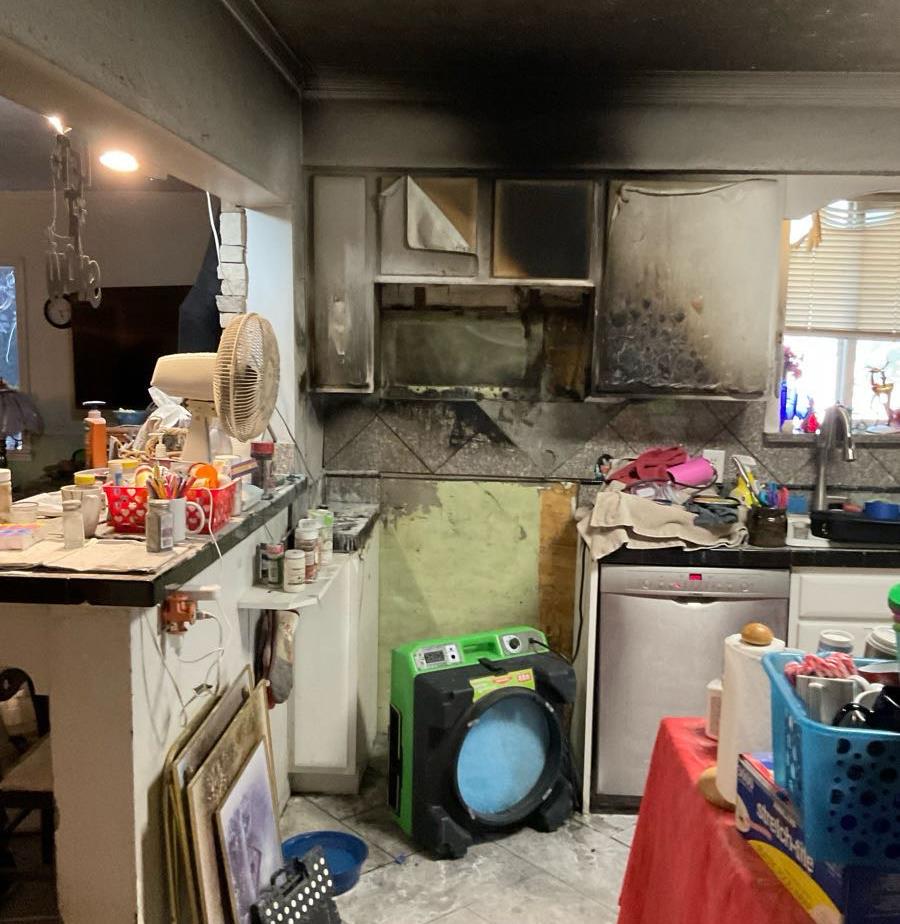A Cleaner Home After a Fire: How Smoke and Soot Affect Your Air Quality
9/16/2024 (Permalink)
When a fire strikes, the visible damage is easy to spot—charred walls, blackened ceilings, and burned furniture. But what often goes unnoticed is the lasting impact that smoke and soot can have on your home’s air quality. Long after the flames are out, these invisible particles continue to circulate, creating a hidden health hazard for you and your family.
At SERVPRO of Twin Falls and Jerome Counties, we specialize in smoke and soot cleaning services that not only restore the appearance of your home but also improve the air you breathe. Here’s why professional smoke and soot cleaning is crucial for your health and well-being.
What Exactly Is Soot?
Soot is the fine, black powder that’s left behind when organic matter doesn’t burn completely. While it may look harmless, these tiny particles can penetrate deep into your home’s structure, furniture, and air ducts. Soot isn’t just unsightly—it’s also a mix of dangerous substances, including carbon, ash, and toxic chemicals that can remain in the air long after the fire has been extinguished.
How Smoke and Soot Impact Air Quality
The microscopic particles from smoke and soot are often too small to see, but they can cause big problems for your air quality. When inhaled, these particles can enter your lungs and bloodstream, potentially leading to health issues like:
- Respiratory problems: Coughing, wheezing, and shortness of breath.
- Asthma attacks: For those with pre-existing conditions, exposure to soot can trigger more frequent and severe attacks.
- Irritation: Soot can irritate your eyes, nose, and throat.
- Long-term health risks: Prolonged exposure to smoke particles has been linked to heart disease, lung cancer, and other serious conditions.
Why DIY Smoke Cleanup Often Isn’t Enough
Many homeowners attempt to clean up after a fire with household cleaning products, but this can do more harm than good. Smoke and soot particles are not just surface-level contaminants; they embed themselves into soft materials like furniture, carpets, and even the walls. Household cleaners aren’t designed to fully remove these particles, and some can even cause soot to smear, making the damage worse.
How SERVPRO® Cleans Smoke and Soot
At SERVPRO of Twin Falls, we use specialized equipment and techniques to tackle smoke and soot damage at its source. Here’s how we ensure your home’s air quality is restored:
- Air scrubbers: These devices filter the air to remove smoke and soot particles.
- Ozone machines: We use ozone generators to neutralize odors and remove airborne particles.
- Deep cleaning: From carpets to air ducts, we clean all surfaces to ensure soot is fully removed.
- Deodorization: Smoke odors can linger in your home long after the fire. Our deodorization techniques eliminate these odors for good, rather than masking them temporarily.
Why Quick Action Matters
The longer smoke and soot particles remain in your home, the more they can settle into walls, floors, and fabrics, making cleanup more difficult and expensive. Acting fast not only improves air quality but also reduces the chance of long-term damage to your home’s structure.
Trust SERVPRO of Twin Falls for a Healtheir Home
After a fire, don’t let smoke and soot linger in your home. At SERVPRO of Twin Falls and Jerome Counties, we provide comprehensive smoke and soot cleaning services that restore not only your home’s appearance but also the air you and your family breathe. Our professional team is ready to help you recover after a fire, ensuring your home is safe, clean, and free from harmful particles.
Contact us today to learn more about how we can help you restore your home’s air quality after smoke and soot damage.






 24/7 Emergency Service
24/7 Emergency Service